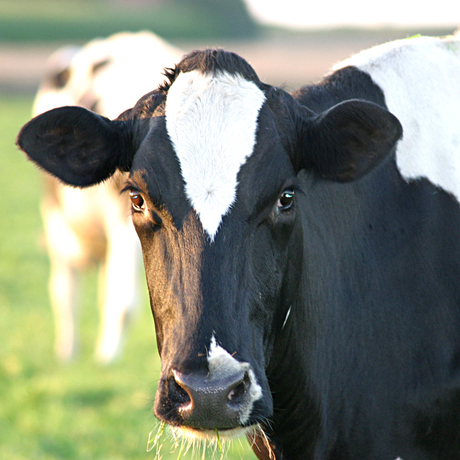How microbes make methane

US chemists have discovered once and for all how microbes make methane, settling a longstanding debate in the process.
Their study, published in the journal Science, demonstrates one of a very few known instances of nature using a highly reactive methyl radical in its biological machinations.
More than 90% of methane is generated by microbes known as methanogens. To make the gas, methanogens use an enzyme to the aid chemical reaction. This enzyme can run the reaction in reverse to break down methane for energy consumption.
This microbial enzyme creates the burnable gas by slapping a hydrogen atom onto a molecule called a methyl group. A methyl group contains three hydrogens bound to a carbon atom, just one hydrogen shy of full-grown methane.
To generate methane, the enzyme pulls the methyl group from a helper molecule called methyl-coenzyme M. Coenzyme M’s job is to nestle the methyl group into the right spot on the enzyme. What makes the spot just right is a perfectly positioned nickel atom, which is largely responsible for transferring the last hydrogen.
How the nickel atom does this, however, has been debated for decades. Different possible paths create different fleeting, ephemeral intermediate molecules, but the reaction happens too fast for scientists to distinguish between them.
The path chemists have most sided with involves the nickel atom on the enzyme directly attacking the methyl group and stealing it from coenzyme M. The methyl-nickel molecule exists temporarily, until the methyl in its turn steals a hydrogen atom from another molecule in the enzyme’s workspace, coenzyme B, and becomes methane. Many experiments lend support for this idea, which creates an intermediate methyl-nickel molecule.
A second possibility, according to a much smaller group of supporters, is via a methyl radical. Radicals are unstable molecules that have an unpaired electron. They can do a lot of damage by breaking down weaker bonds in molecules.
It’s that unpaired electron that causes problems. Bonds between atoms routinely involve two electrons, like a pair of ballroom dancers. The unpaired electron will do everything in its power to find a second, just as a single dancer in search of a partner will cut into another couple.
In this path to methane, the nickel atom bonds to a sulfur atom in coenzyme M rather than the methyl group. This knocks the methyl away and sends it off sans an electron. The irritated methyl radical immediately snags a hydrogen atom from coenzyme B, generating methane.
To find out which mechanism was correct, scientists from the University of Michigan and the Department of Energy’s Pacific Northwest National Laboratory (PNNL) slowed down the reaction 1000 times by hobbling the second half of the path to methane, after the intermediate came alive. Doing so let the intermediate build up.
Then they performed a biochemical analysis called electron paramagnetic resonance spectroscopy that allowed them to distinguish between the two intermediate molecules. If the reaction created the methyl-nickel molecule, methyl-nickel would show up as a blip on their EPR system. If the reaction created a methyl radical that sauntered off, the molecule remaining with the protein — nickel bound to coenzyme M — would not register at all.
The team found no blip in the EPR profile of the post-reaction products, making the most likely intermediate the methyl radical. To be sure, the team performed additional biochemical analyses that ruled out other potential molecules. They also performed another biochemical test and showed that the structure of the major intermediate was the nickel stuck to coenzyme M, the expected result if the reactions took the methyl radical path.
“The impact of radicals on living matter, such as biological material, can be devastating, and involvement of a methyl radical, one of the most unstable radicals, is truly surprising,” said study co-author Simone Raugei from PNNL. “For this to happen and make methane 100% of the time, the protein has to perform and control this reaction with an extremely high degree of precision, placing that methyl radical specifically beside only one atom — the hydrogen atom bound to the sulfur of coenzyme B.”
To further substantiate their results, the team modelled the reaction computationally. They zoomed in on the action within the enzyme, known as methyl-coenzyme M reductase.
“We found that the methyl radical required the least amount of energy to produce, making that mechanism the frontrunner yet again,” said co-author Bojana Ginovska from PNNL. In fact, one of the other intermediates required three times as much energy to make compared to the methyl radical.
Modelling the reaction computationally also allowed the team to look inside the reductase. Experiments showed that the reaction happens faster at higher temperatures and why: parts of the protein that helped move the reaction along would move the nickel closer to the methyl-coenzyme M. Shorter distances allowed things to happen faster.
The results might help researchers learn to control methane synthesis — either in the lab or in bacteria that make it in places like the Arctic — and how to break it down. According to Raugei, “It would be a major breakthrough if we were able to devise a biomimetic strategy to activate methane, which means to turn it into more useful fuels.
“If nature figured out how to do it in mild conditions, then perhaps we can devise an inexpensive way to design catalysts to convert methane into liquid fuels like we use in our vehicles and jets.”
Virtual pathology streamlines rapid onsite evaluation
Technology from Grundium, a specialist in digital imaging for pathology, has been shown to match...
Cannabis detected in breath from edibles
Researchers say they have made the first measurement of THC in breath from edible cannabis, in a...
Sydney's tap water contains more PFAS than previously thought
Researchers have identified 21 new per- and polyfluoroalkyl substances (PFAS) in Sydney's tap...







